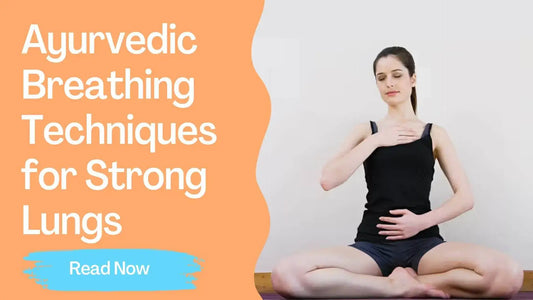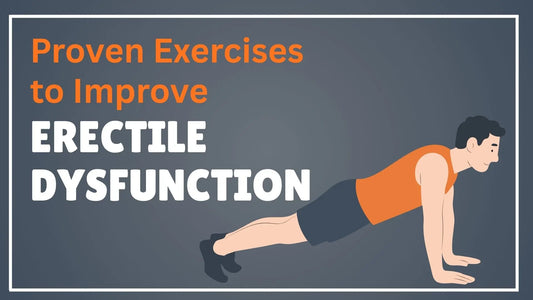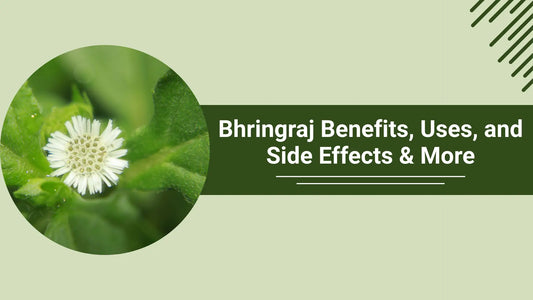
Top 7 Breathing Exercises to Naturally Increase Lung Capacity
Maintaining stronger and healthier lungs is essential for smooth breathing. Due to growing pollution and the weather change, it’s easier to get respiratory health issues.
The toxins might accumulate in your lungs, interfering with your normal breathing. Also for people struggling with asthma, bronchitis, or sinus issues, easy breathing remains a challenge. However, you can immune yourself against it by adding some effective breathing exercises for the lungs to your daily routine.
In Ayurveda, Pranayama has a very valuable role in the natural detoxification of the lungs and offers numerous health benefits too. In this blog, we will talk about it in detail the various Ayurvedic breathing exercises to improve lung function and the various health benefits it offers. So, keep reading!
Top 7 breathing exercises to increase lung capacity!
1. Ujjayi Pranayama (Victorious Breath)

Ujjayi Pranayama is a breathing exercise used by Ayurvedic practitioners and yogis since ancient times to regulate their energy and bring natural harmony to the body, mind, and spirit. It was popular as an essential Dinacharya practice in the old times. It has been widely known exercise for dealing with respiratory disorders, digestive issues, and mental unrest.
Benefits
-
It opens up blocked nasal passages
-
Helpful exercise to manage asthma
-
It makes the lungs stronger
-
Enhances oxygen supply to lungs
-
Helps in easy and smooth breathing
How to practice Ujjayi Pranayama ?
-
Sit in a comfortable position, keeping your spine straight.
-
Breathe in slowly through your nose while gently tightening your throat
-
Exhale in the same manner, maintaining a soft "ocean wave" sound.
-
Repeat the process for at least 5–10 minutes.
2. Nadi Shodhana (Alternate Nostril Breathing)

Nadi Shodhana as evident by its name, helps to clear nadis, which are vital energy channels that govern our well-being. It helps with easy inhaling and exhaling through alternate nostrils, which helps balance the flow of prana and clear any blocked pathway.
Benefits of Nadi Shodhana
-
Provides control over breathing
-
Reduces risk of respiratory diseases
-
Help detoxify the lungs naturally
-
Helps in uninterrupted breathing
How to practice Nadi Shodhana?
-
Sit in a comfortable position, keeping your spines straight
-
Close your right nostril with your thumb, inhale slowly through the left one
-
Now close the left nostril with your ring finger and release your thumb
-
Now exhale through the right nostril.
-
Inhale through the right, then switch again and exhale through the left.
-
Continue this pattern for 5–10 minutes, slowly and mindfully.
3. Kapalbhati (Skull-Shining Breath)

Kapalbhati is considered a powerful kriya in Ayurveda that purifies the lungs and helps in its natural cleansing. It removes any excess Kapha which can create complications in normal breathing. It is practised by keeping the focus on forceful exhalations.
Benefits
-
Helps manage allergies and sinus congestion
-
Eliminates accumulated mucus
-
Strengthens the respiratory system
-
Improves oxygen supply to lungs
-
Helps heal asthma and bronchitis-related symptoms
How to practice Kapalbhati?
-
Sit in a comfortable position.
-
Keep your spine straight and arms on your knees
-
Now relax yourself by closing your eyes.
-
Take a few deep breaths, then inhale through both nostrils.
-
Exhale forcefully and quickly through the nostrils
-
Try to make a sound with each exhale, similar to blowing your nose.
-
After several rounds of breathing, hold your abdominal area in and chin down gently for a few seconds.
-
Repeat this process, and as you feel more comfortable, try to hold it longer.
4. Bhramari (Bee Breath)

In Ayurveda, Bhramari Pranayama, or Bee Breath, is a calming and therapeutic breathing technique that involves gentle humming to balance the doshas (especially Vata and Pitta). It is a widely practised exercise done to promote mental and respiratory health.
Benefits
-
Relieves tension around the forehead and sinuses
-
Enhances voice clarity
-
Reduces throat irritation
-
Help manage asthma and breathlessness
-
Helpful during insomnia and anxiety
How to practice Bhramari?
-
Sit comfortably with a straight spine
-
Close your eyes, keep your body relaxed
-
Use your thumbs to gently close your ear flaps
-
Inhale deeply through your nose
-
Exhale slowly while making a humming “mmmmm” sound
-
Focus on the vibration in your head
-
Repeat for 5–7 rounds or as per your comfort
5. Viloma Pranayama

Viloma Pranayama is a gentle, controlled breathing technique described in yogic and Ayurvedic texts, for its therapeutic effects on the respiratory system. As the term "Viloma" means, this technique intentionally alters the rhythm of breathing to improve lung health and function and energy flow within the body.
Benefits
-
Enhances lung capacity and oxygen absorption
-
Improves control over breath
-
Clears blockages in the chest and lungs
-
Helpful for asthma or shallow breathing
-
Strengthens the diaphragm and calms the nervous system
How to practice Viloma Pranayama ?
-
Lie down on your back in a relaxed position
-
Breathe in to fill one-third of your lungs. Now pause for 2 seconds.
-
Inhale again, filling another one-third of your lungs. Pause for 2 seconds.
-
Inhale fully to fill your lungs. Pause for a moment, then exhale normally.
-
Repeat this process for as many rounds as you are comfortable with
6. Anulom Vilom

Anulom Vilom, commonly known as alternate nostril breathing exercise, is a significant and time-honoured yogic breathing method. Within the realms of Ayurveda and yogic philosophy, this technique is highly valued for its ability to harmonize the body's energies, purify the nadis (energy pathways), and enhance both physical and mental health.
Benefits
-
Keep the Nadis (Energy Channels) clean
-
Promotes harmony in body and mind
-
Improves Agni (Digestive Fire)
-
Helps in toxin removal
-
Calms the Manas (Mind)
-
Strengthens the Nervous System
-
Boosts metabolism
How to practice Anulom Vilom ?
-
Sit comfortably in a quiet place with good ventilation.
-
Use your right hand, folding your index and middle fingers inward
-
Use your thumb to close your right nostril.
-
Exhale through the left nostril.
-
Inhale through the left for 4 counts.
-
Close both nostrils and hold for 8 counts.
-
Exhale through the right for 8 counts.
-
Now breathe in through the right nostril for 4 counts
-
close both nostrils and hold for 8 counts before exhaling through the left for 8 counts.
-
Repeat this cycle for 5-10 minutes.
7. Bhastrika

As winter gives way to spring, an excess of kapha can lead to various complications. Bhastrika Pranayama, often referred to as "bellows breath," is an effective breathing practice that helps to reduce surplus kapha while also harmonizing the kapha and vata doshas. This technique aids in clearing mucus from the respiratory tract, supporting the well-being of the heart and lungs.
Benefits
-
It reduces the risk of respiratory issues
-
Helps in better respiratory function
-
Help clear nasal impurities
-
Helps with easy breathing
-
Helpful in treating lung fibrosis
How to practice Bhastrika?
-
Sit in a comfortable posture, preferably in a cross-legged position.
-
Start with a few full yogic breaths to prepare your body and mind.
-
Inhale deeply, then exhale forcefully while contracting the abdomen
-
Keep repeating for ten breaths.
-
Following the tenth inhalation, pause before exhaling slowly to conclude one round.
-
Normalize your breath, and gently open your eyes.
What are the benefits of these breathing exercises for the lungs?
In Ayurveda, there is a connection between exercise and the lungs. The lungs are primarily governed by the Kapha dosha, which is responsible for moisture, stability and structure. When Kapha is in balance, it supports healthy lung function. However, an imbalance in Kapha can lead to respiratory issues such as congestion, coughs, asthma and difficulty breathing.
Here is how your lungs are benefitting from these exercises!
-
It improves oxygen supply to the lungs
-
It boosts your energy levels and improves overall lung function.
-
It improves your cognitive functions
-
It lowers your anxiety levels and its impact on the lungs.
-
Reduces hypertension or high blood pressure
-
Prevents and manages respiratory diseases such as bronchial asthma.
-
Helpful for those with lung cancer and cardiovascular disease
Conclusion
For smoother breathing, it’s important to keep your lungs strong. Stronger lungs mean a healthier you. You can keep your lungs strong through some of the Ayurvedic breathing exercises such as kapalbhati, Bhastrika, Viloma Pranayama, and Nadi shodhana. These exercises are beneficial not only for your respiratory health but also promote overall well-being. To avail of most of its benefits, try including these lung exercises at home.
Sources
WebMD. What Is Pranayama? [Internet]. WebMD; 2023 [cited 2025 Apr 7]. Available from: https://www.webmd.com/balance/what-is-pranayama
Saoji AA, Raghavendra BR, Manjunath NK. Effects of yogic breath regulation: A narrative review of scientific evidence. J Ayurveda Integr Med. 2019;10(1):50–8. Available from: https://www.ncbi.nlm.nih.gov/pmc/articles/PMC7336946/
Yadav R, Das N. Study of the effect of short-term training of Anulom-Vilom pranayam on blood cell parameters in medical students. Unique J Ayurvedic Herb Med. 2018;6(6):14–7. Available from: https://www.researchgate.net/publication/329609100

Dr. Hindika Bhagat
Dr. Hindika is a well-known Ayurvedacharya who has been serving people for more than 7 years. She is a General physician with a BAMS degree, who focuses on controlling addiction, managing stress and immunity issues, lung and liver problems. She works on promoting herbal medicine along with healthy diet and lifestyle modification.



